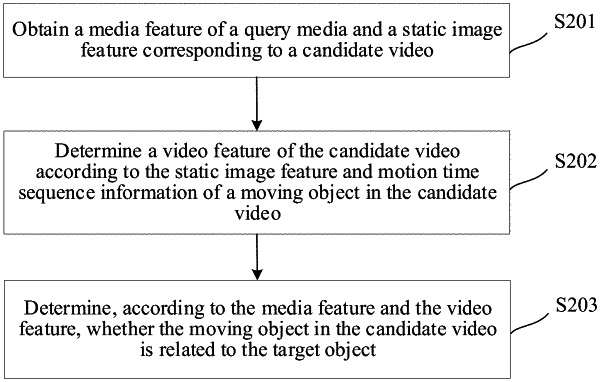| CPC G06F 16/7328 (2019.01) [G06F 16/7837 (2019.01); G06T 7/20 (2013.01); G06V 10/764 (2022.01); G06V 10/82 (2022.01); G06V 20/41 (2022.01); G06V 20/46 (2022.01); G06V 20/49 (2022.01); G06T 2207/10016 (2013.01)] | 17 Claims |

|
1. A video query method, implemented by an electronic device, comprising:
obtaining a media feature of a query media and a static image feature corresponding to a candidate video, the query media comprising a target object, the candidate video comprising a moving object;
determining a video feature of the candidate video according to the static image feature and motion time sequence information of the moving object in the candidate video, wherein:
the video feature comprises sub-features corresponding to n video segments in the candidate video, n being an integer greater than 1; the motion time sequence information reflects motion trends of the moving object between adjacent video segments; and
a tth video segment corresponds to a tth sub-feature, t being a positive integer greater than 1 and not greater than n, and the tth sub-feature is determined by:
determining, in the tth video segment, a target motion trend of the moving object from a (t−1)th sub-feature;
adjusting a target region corresponding to the moving object in a feature plane of the (t−1)t sub-feature according to the target motion trend; and
determining the tth sub-feature according to the adjusted (t−1)th sub-feature and a static image feature corresponding to the tth video segment; and
determining, according to the media feature and the video feature, whether the moving object in the candidate video is related to the target object.
|